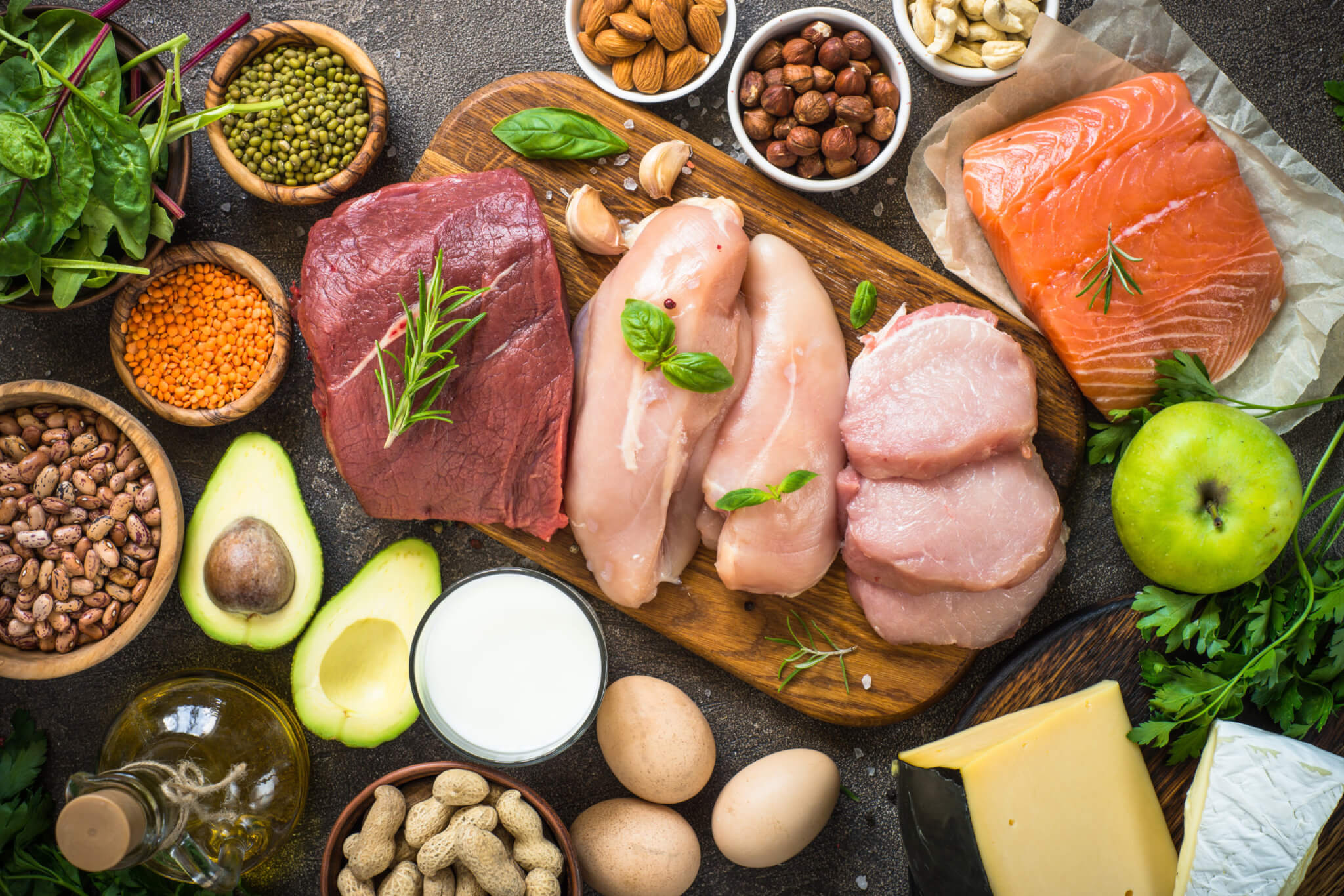Wellness culture on social media has started to push protein as a magical macronutrient that can do it all. From cookies made of protein powder to cottage cheese pasta dishes, “high protein” has been the biggest, most long-lasting social media wellness trend in recent years. Protein is a crucial nutrient, it’s the building block of life, after all. But does everything need to be “protein-ified”?
What is a high-protein diet?
Protein is necessary for critical processes in the body, such as muscle cell repair and maintenance, energy production, hormone function, and more. High-protein diets focus on increasing protein intake beyond normal recommendations. Currently, the standard recommendation is 0.8 grams of protein daily per kilogram of body weight, and protein should make up 10 to 35 percent of daily calories. High-protein diets focus on exceeding this. Exact grams per day tend to vary from person to person based on age, gender, height, fitness goals, and more. Usually, the increase in protein is accompanied by a decrease in carbohydrates. Additionally, many who follow this type of diet do it to help facilitate weight loss.
Others who may find a high-protein diet beneficial are people with chronic kidney disease undergoing dialysis, those with diabetes who would like to achieve more balanced blood sugar levels, people with significant wounds or pressure injuries, and those trying to put on more muscle.
The problem with pushing the diet on social media
According to a new report by Brandwatch, online search interest for “high protein” reached a five-year high in the early part of this year and has remained elevated. The number of people talking about high protein online has increased exponentially over the years. Brandwatch mentions that 52 percent of all online discussions about “high protein” end up coming from adults between the ages of 25 and 40 years.
Again, there are several reasons why someone may want to or medically benefit from a high-protein diet. That’s not the issue. Problems arise when TikTokers and other media wellness/gym influencers push the idea that everything needs to be high in protein. As if every sandwich has to have protein bread or every muffin has to be half protein powder. While prioritizing protein is key for ensuring your body is able to carry out the several roles that it has to, falling into this line of thinking can be a slippery slope.

Most people can get enough protein (yes, even on a high-protein diet), without sprinkling protein powder into everything or choosing a “health-ified” version of their favorite cracker. Two eggs and a breakfast meat in the morning, chicken or tuna salad for lunch, Greek yogurt as a snack, and salmon for dinner make for a day packed with close to 85 grams of protein (depending on serving size and other factors).
That’s 1.2 grams/kilogram of bodyweight for someone who weighs 150 pounds. Obviously, things can vary depending on several variables. Some people (typically those who weigh more and/or want to build significant muscle), may require even more than this. Protein powder and protein “hacks” can be a great tool for that.
However, influencers glamorizing high protein as a cure-all for weight loss and chronic illness can be misleading to the average viewer who thinks that if they eat the exact same way as them, their health problems will go away. The reality is that everyone will have different needs, and it won’t automatically mean weight loss or a “cure” if you increase your protein.
The woman who is sedentary and doesn’t go to the gym truly doesn’t need nearly as much protein as the “gym bro” who lifts 12 hours a week claims she does. By accepting and recognizing these nuances, we can help to better inform people on the benefits of adequate protein intake without turning it into a new fad diet that takes real benefits and blows them out of proportion.
Bottom Line
Protein is one of the most important nutrients out there. Unless you are an athlete, an avid gym goer, or have a certain health condition, however, you don’t need as much protein as you might’ve been influenced to believe. Most people are attracted to the idea that they could lose weight by swapping everything they’d normally eat for a high-protein version, but always take a moment to recognize your own lifestyle and needs.
Chances are, you’re getting enough as is. If you include some form of whole-food protein in your meals and snacks (beans, cheese, chicken, fish, eggs, tofu, etc.), you can feel comfortable that you’ve covered your bases. If you have specific goals in mind, there’s also no problem with tracking intake and re-assessing as necessary. In general, there usually isn’t a need to stuff yourself with tons of high-protein alternatives or sneak them into everything you eat.
You might also be interested in:
- High-protein diets may decrease testosterone levels in men, leading to ED, fertility struggles
- Best Vegan Protein Powder: Top 5 Plant-Based Supplements Recommended by Experts
- 5 Keys To Getting More Protein In Your Diet: Follow These Tips For Stronger Muscles, Healthier Weight

